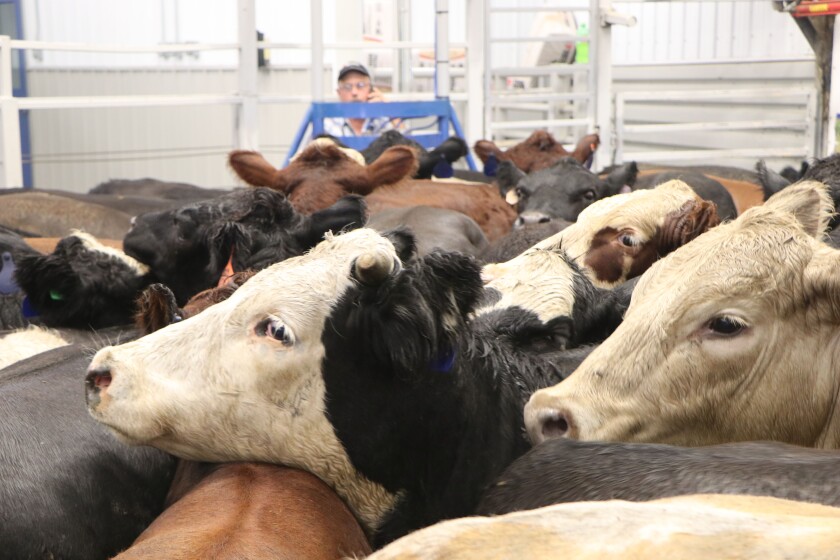Proactive Security: Bagley Risk Management Methods
Proactive Security: Bagley Risk Management Methods
Blog Article
Understanding Animals Risk Defense (LRP) Insurance Coverage: A Comprehensive Guide
Navigating the world of animals risk protection (LRP) insurance can be an intricate endeavor for many in the agricultural industry. From just how LRP insurance coverage works to the various insurance coverage options readily available, there is much to discover in this extensive overview that can possibly form the method animals producers approach danger management in their businesses.

Exactly How LRP Insurance Coverage Works
Periodically, recognizing the mechanics of Livestock Risk Security (LRP) insurance can be complicated, but breaking down exactly how it functions can give clearness for herdsmans and farmers. LRP insurance policy is a risk management tool developed to secure animals manufacturers versus unexpected price declines. The plan enables manufacturers to set an insurance coverage degree based upon their certain demands, selecting the number of head, weight variety, and protection rate. When the plan is in area, if market value fall listed below the coverage cost, manufacturers can sue for the difference. It's vital to keep in mind that LRP insurance is not a revenue warranty; instead, it concentrates exclusively on price threat defense. The insurance coverage duration normally ranges from 13 to 52 weeks, supplying adaptability for manufacturers to select a period that lines up with their manufacturing cycle. By utilizing LRP insurance coverage, breeders and farmers can alleviate the financial threats related to varying market value, ensuring better security in their procedures.
Eligibility and Protection Options

When it comes to coverage options, LRP insurance supplies manufacturers the versatility to pick the insurance coverage level, coverage duration, and recommendations that finest fit their threat monitoring needs. By recognizing the eligibility criteria and protection choices available, livestock producers can make educated choices to manage risk successfully.
Advantages And Disadvantages of LRP Insurance
When examining Livestock Risk Defense (LRP) insurance policy, it is necessary for livestock producers to consider the negative aspects and advantages inherent in this danger management tool.

One of the primary advantages of LRP insurance policy is its ability to supply protection against a decline in animals prices. Additionally, LRP insurance policy supplies a degree of flexibility, permitting producers to tailor insurance coverage degrees and plan durations to match their certain demands.
One constraint of LRP insurance is that it does not protect versus all kinds of threats, such as disease break outs or natural disasters. It is crucial for manufacturers to very carefully assess their private threat exposure and economic situation to figure out if LRP insurance is the best risk administration tool for their procedure.
Recognizing LRP Insurance Coverage Premiums

Tips for Optimizing LRP Advantages
Making best use of the benefits of Livestock Risk Defense (LRP) insurance coverage requires calculated planning and aggressive danger monitoring - Bagley Risk Management. To make the most of your LRP insurance coverage, think about the adhering to tips:
Frequently Evaluate Market Problems: Keep educated about market fads and price fluctuations in the livestock sector. By keeping track of these aspects, you can make educated decisions concerning when to buy LRP protection to secure against possible losses.
Set Realistic Protection Degrees: When picking coverage degrees, consider your manufacturing expenses, market try here worth of livestock, and potential risks - Bagley Risk Management. Setting practical protection degrees makes sure that you are effectively safeguarded without overpaying for unneeded insurance
Expand Your Protection: Rather than counting entirely on LRP insurance policy, think about expanding your risk administration strategies. Incorporating LRP with various other risk management devices such as futures contracts or choices can provide comprehensive insurance coverage against market unpredictabilities.
Evaluation and Readjust Insurance Coverage Routinely: As market conditions change, occasionally review your LRP protection to guarantee it aligns with your existing danger direct exposure. Changing insurance additional hints coverage levels and timing of purchases can assist enhance your threat security approach. By following these ideas, you can take full advantage of the benefits of LRP insurance coverage and safeguard your animals operation against unanticipated risks.
Final Thought
In conclusion, livestock threat defense (LRP) insurance policy is a useful device for farmers to take care of the monetary risks related to their animals operations. By recognizing how LRP functions, qualification and protection alternatives, in addition to the pros and disadvantages of this insurance, farmers can make educated choices to safeguard their resources. By carefully taking into consideration LRP premiums and applying methods to make best use of benefits, farmers can reduce prospective losses and ensure the sustainability of their operations.
Livestock manufacturers interested in obtaining Animals Danger Security (LRP) insurance coverage can check out an array of qualification requirements and insurance coverage choices customized to their specific livestock procedures.When it comes to insurance coverage alternatives, LRP insurance coverage offers producers the adaptability to choose the protection degree, insurance coverage period, and recommendations that ideal fit their danger administration requirements.To grasp the details of Animals Threat Defense (LRP) insurance policy totally, understanding the variables influencing LRP insurance premiums is crucial. LRP insurance policy costs are identified by numerous components, including the protection level chosen, the expected rate of livestock at the end of the insurance coverage duration, the kind of livestock being insured, and the size of the coverage period.Testimonial and Adjust Protection On a regular basis: As market conditions change, regularly examine your LRP protection to guarantee it aligns with Full Report your present danger exposure.
Report this page